Home iPadia iPad Accessories ,,,,, There are tons of iPad keyboards on the market, and we've talked about them extensively over the years. One of these, of course, is the Bluetooth Magic Keyboard, the keyboard that Apple sells both with iMacs and separately on its store and on the new pages dedicated to the Cupertino house on Amazon. The second generation is the one with a low profile, recharging via Lightning socket and small rear switch for turning off, instead of the large switch on the side of the keyboard, which in the bag was easy to be operated by mistake.
The keyboard, however, is known, excellent in its usability and we do not talk about it here, since we have already done it abundantly also in the 2018 keyboard guide. The objective of this review instead is the overall one to give more quality to writing with iPad , which both in the Pro version and in the “normal” 9.7-inch version (or in the intermediate ones such as the 10.5 Pro and the various generations of the mini), has long been a very powerful tool and loved by those who have to write especially for their portability, autonomy and lack of distractions.
The idea therefore is not so much to talk about the keyboard, which we take for granted is available to the reader and considered valid, as to find a way to comfortably carry it around together with the Apple tablet. And here comes this “small” but innovative piece of design by Studio Neat, which has substantially very few competitors (by heart: the Origami keyboard-support cover by Incase and little else) but which is undoubtedly very convenient for those who also want to have this setup. But first, let's see who we are talking about since Studio Neat has a history that goes far beyond that of the production of accessories.
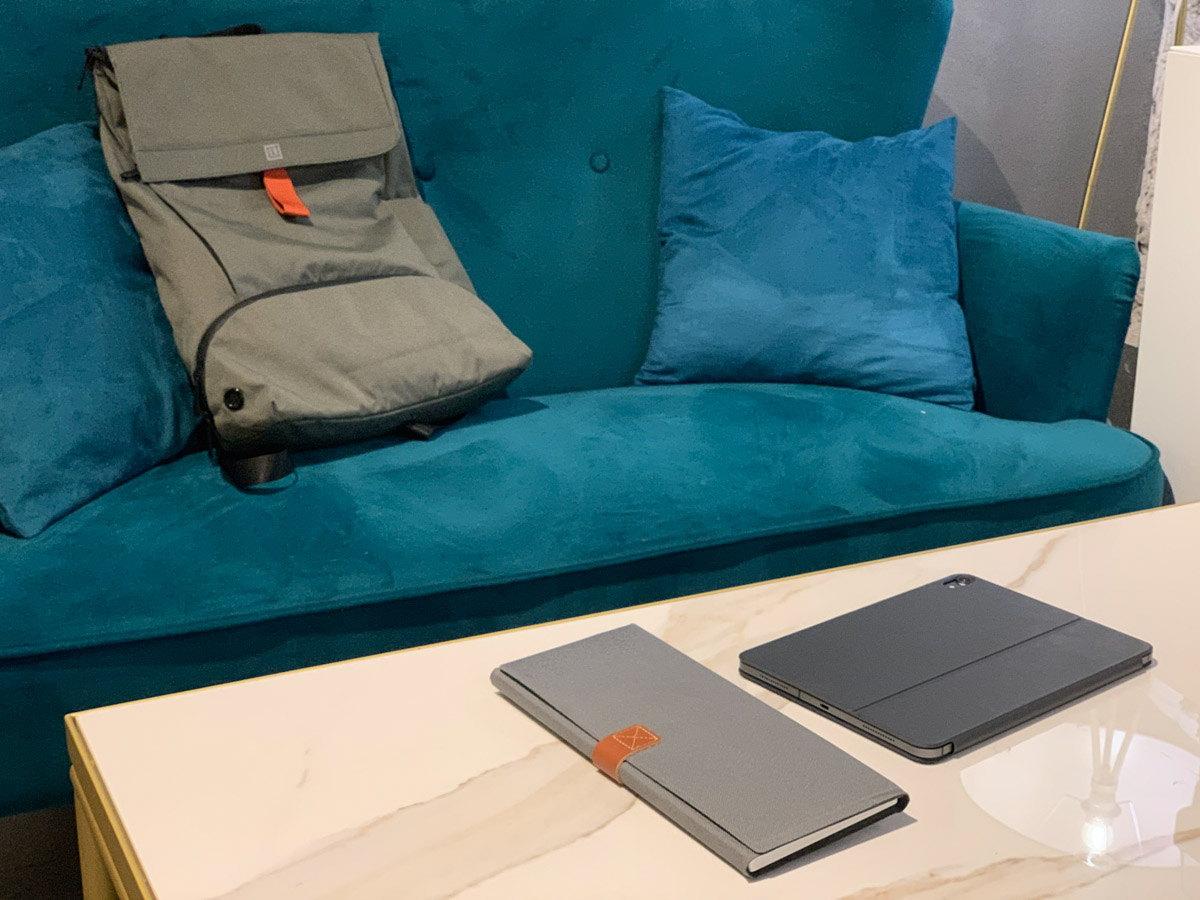
The story of Studio Neat The story of Studio Neat is in fact the story of two niche designers, Tom Gerhardt and Dan Provost, who love to work on small, high-quality projects that solve particular problems. The idea of Studio Neat (which in Italian could be translated as “Studio Ben Fatto” or “Studio di Buon Gusto”) is to stay focused on the important things: the problems to be solved in a minimalist and elegant way.
The two also follow a particular philosophy, especially for a small American company: they have no employees and do not want to grow, because they believe that with today's technology this is no longer necessary: to scale to do better and more. Instead, the two want to devote themselves to the creation of high quality products by exploiting the possibilities that the network economy allows in terms of design, engineering, financing, sales, after-sales and everything else (including accounting management).
So products designed in house and made for example thanks to Kickstarter, such as the first “Glif” (hook for iPhone and other smartphones), “Cosmonaut” (the first stylus for touch screen with large grip, such as the pencil from Paper) and others similar examples. One of the points of arrival in the search for problems to be solved was the design of Canopy, which is an intelligent product both in terms of positioning (in fact it covers a small niche that is potentially very interesting and practically unattended) and in terms of realization, even if we will see it has its little moles.

How the Canopy is made Canopy is a case for the Apple Magic Keyboard 2 (the one currently on the market) made of technical material that turns into a stand to support any iPad: mini, normal 9.7, 10.5 and 11 inches. We could not try it with an old or new generation 12.9-inch iPad and in fact we are doubtful that, especially the larger one, it is truly compatible. We will see better in the future, but the possibility that the stand does not hold the larger iPad must definitely be considered. Not bad because, as we will see, it is also possible to use the stand separately from the iPad, and let the latter rest on its natural support (the screen cover).
Low weight, 170 grams, sleek and elegant profile with leather insert that allows you to tie the cover with a resistant automatic button in closed mode or when it is opened to support the iPad, it is made of synthetic canvas on the outside and microfiber inside so as not to damage the keys or the back of the iPad. The keyboard is glued with four points that Studio Neat defines as “micro-suction pads” but which to us look like glue. We didn't want to go into it by constantly attaching and detaching the keyboard, which is still held firmly in place. There are no other types of hooks and this contributes significantly to making the profile of the key cover so streamlined.
1 of 16 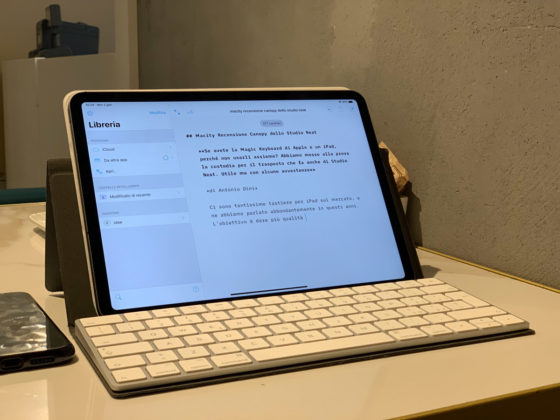
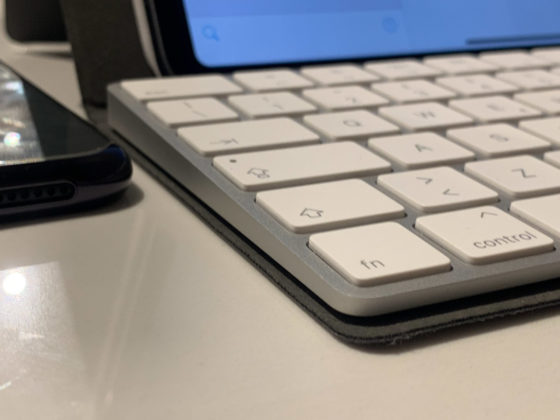
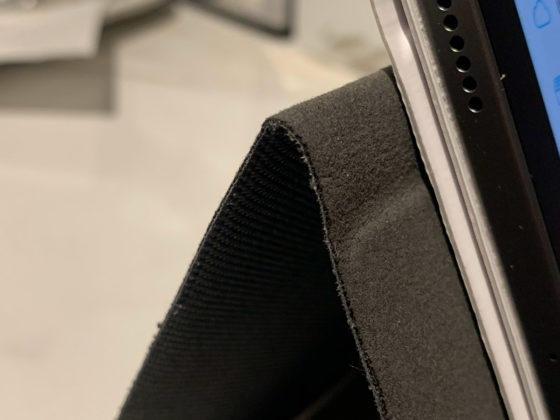
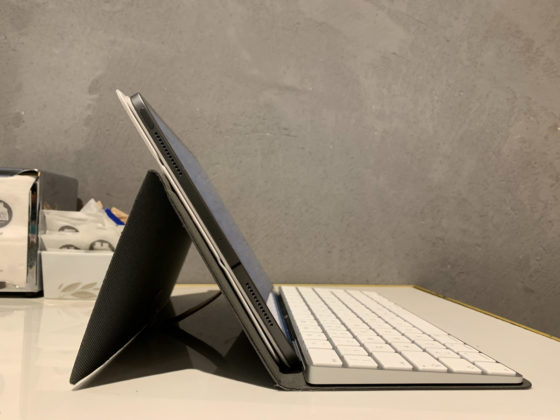
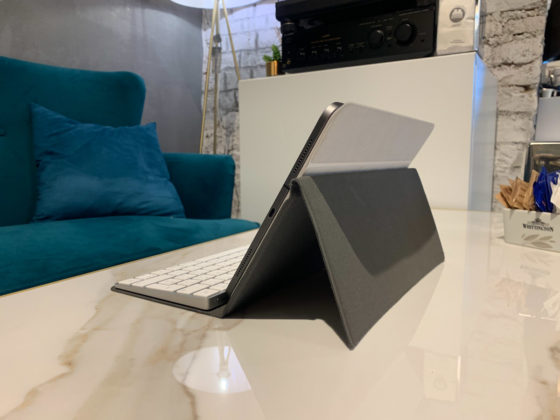
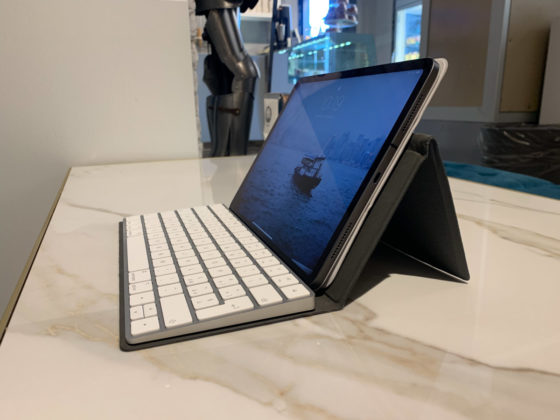
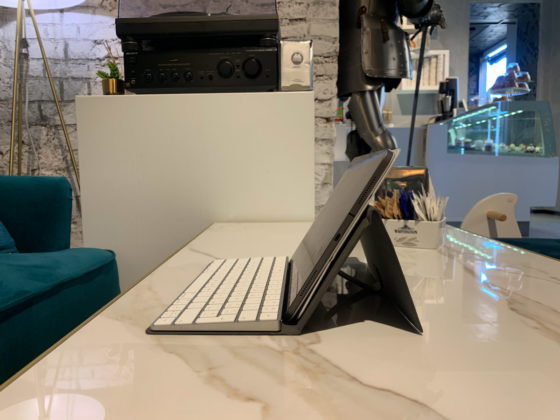
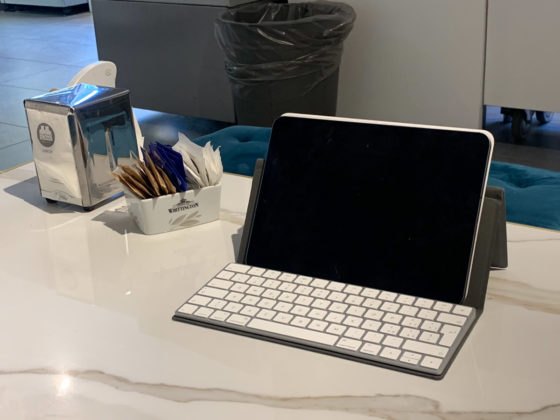
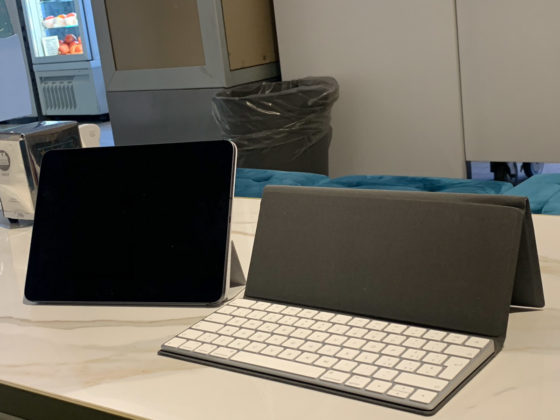
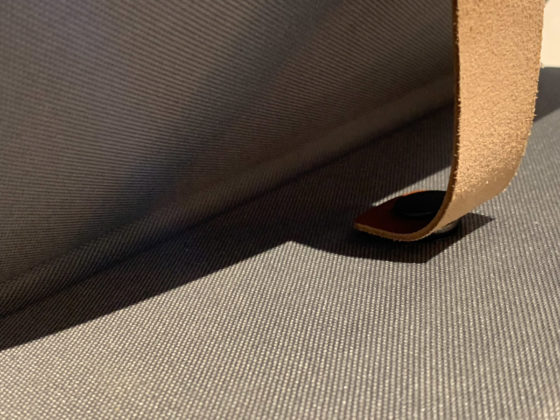
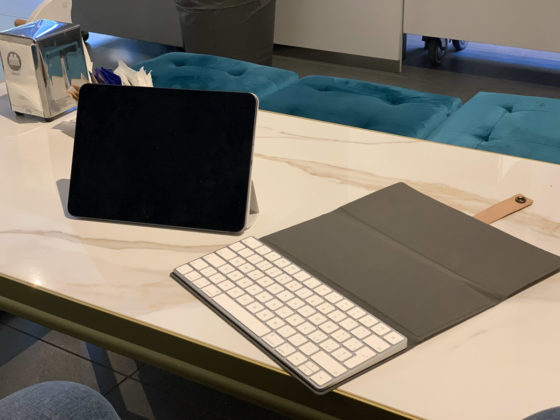
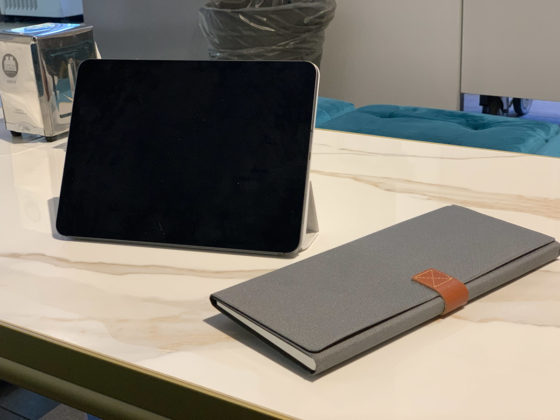
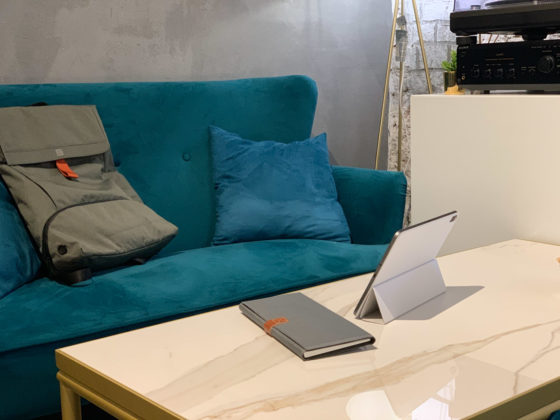
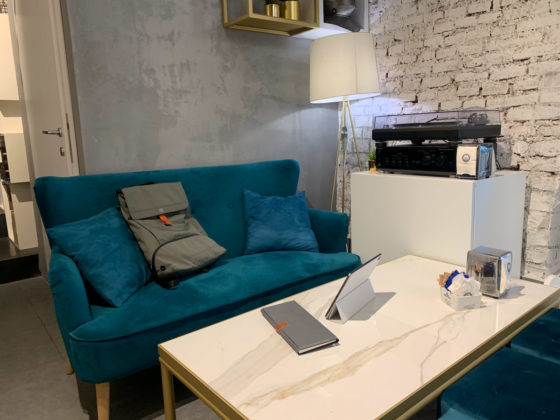
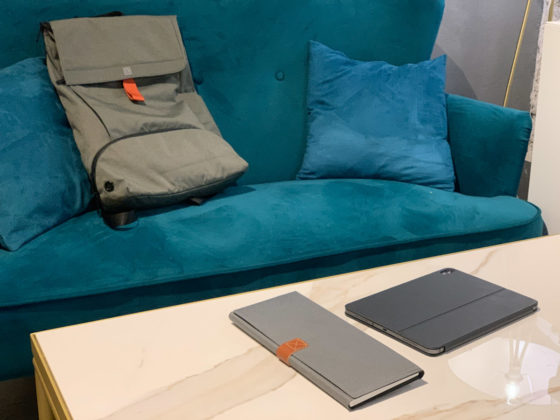
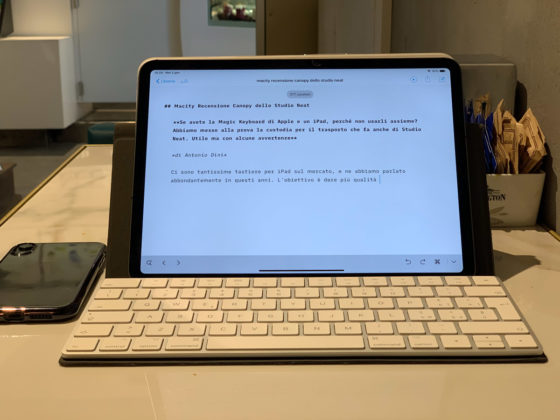
Road test
We took the keyboard from the home Mac mini, which is used relatively less than the MacBook and iPad (and often the iPad Pro with a remote desktop system), and inserted it into the Canopy in seconds. The case perfectly wraps the keyboard and creates a groove in the back, when opened, to fit the iPad or any other Apple device. Canopy is only compatible with Apple's latest generation keyboard .
The extremely reduced profile and the compactness of the case allow it to be kept in a bag without problems: there is no real disadvantage and it acts as a minimalist protection to a product that would suffer from being packed in backpacks or bags without other protection.
The method of use (mainly with the iPad Pro 11) is very simple, just turn on the Bluetooth keyboard and, after the first “contact” (which happens without problems even if the keyboard is paired with the Mac at home) proceeds automatically , you can immediately use it.
The structure is stable except that if it is pushed back, then the locking system that holds the whole, smart and well made, collapses easily. The reason is basically the reason why this combination was created: not so much to have a portable keyboard to use on the lap (practically impossible) or in precarious environments, but a transportable system to rebuild a thoughtful and stable work environment on a desk.
We used it as a tool to write not on the train, on public transport, on a chair during a press conference, because it would not have withstood the limits of the environment. Instead, we used it by recreating a “stable” workstation in controlled environments: on a borrowed desk, on the living room table in the house, at the bar on a dedicated table, and in general in all those areas where we stopped for write – exactly as we are doing now – for some time and in a strategic and structured way.
In fact, the keyboard is not used to work on the move in the sense of precariousness, but it has served us above all to transform the iPad Pro into a reliable, fast and powerful writing tool. In this, he succeeds perfectly.
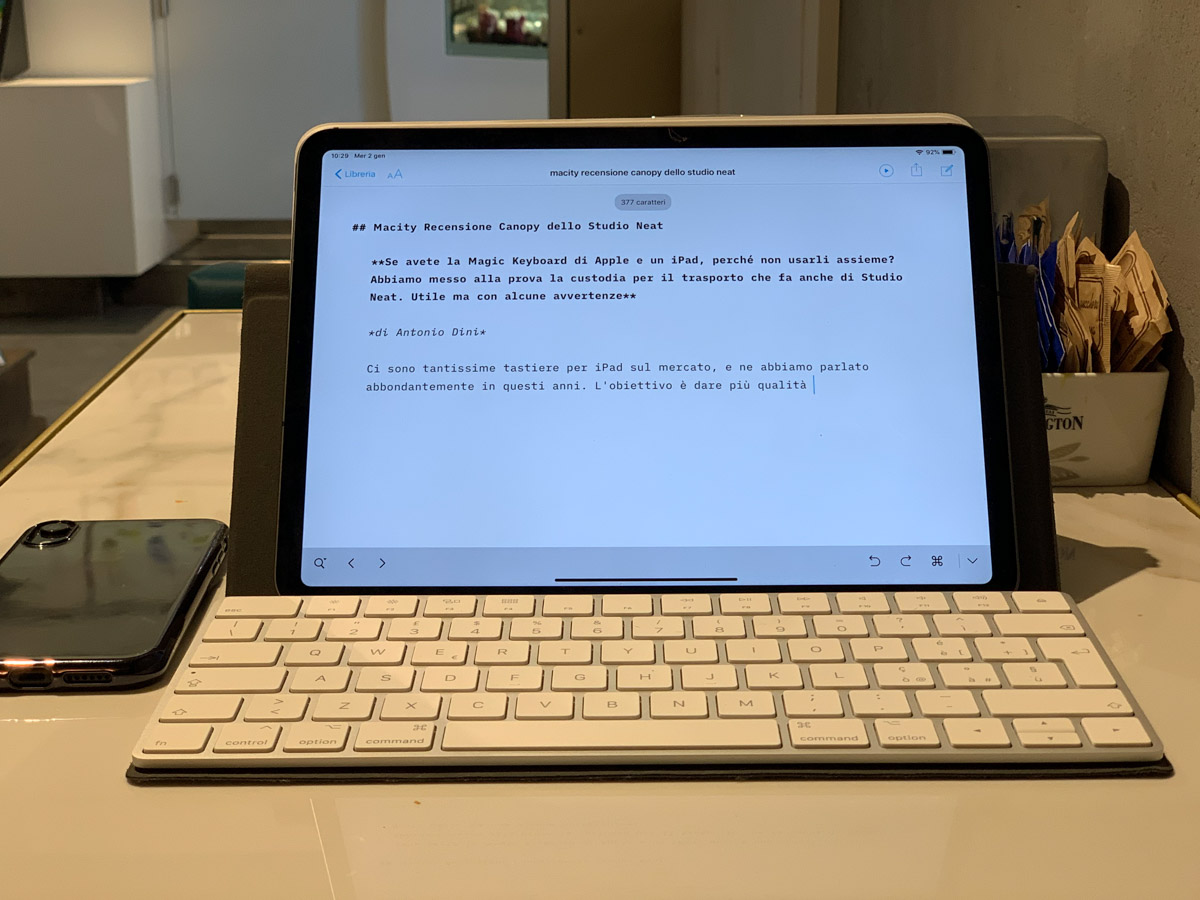
Conclusions
The limitations and advantages of this hybrid product, the Canopy case-stand, are obvious. First of all, the need to which it responds, to which we can give voice with this question: why buy such a cover? What is it for?
The answer is that it enables the transportation and use of Apple's excellent keyboard. And it does so in an elegant and light way, following an absolutely pleasant design philosophy. The closed case disappears in any bag or backpack where the iPad also fits. It allows you to transform the work tool into a real word processing workstation. And maintain a home-like experience if you have the Apple Magic Keyboard for use with your desktop Mac.
Is the Apple “desktop” keyboard attached to the iPad (but also to the iPhone) so useful, in a market made up of many keyboards of various kinds? In our opinion, yes. We have been using it profitably for some time, alternating it with the foldable iPad Pro cover. We bought the Canopy cover before last summer and since then it has become our inseparable travel company precisely because it allows you to always have the Apple keyboard with you. In fact, whether it is used at home or used on the move, the Apple keyboard is a great writing tool and works very well. In many ways it is also superior to the keyboard integrated in the iPad Pro cover, even if being Bluetooth it has a higher consumption than the one that does not have the integrated keyboard. And, in fact, it is not backlit as it is not the one integrated in the Smart Folio cover, but it has function keys and still offers great continuity with the use of the Mac at home.
However, this tool has two limitations: the first is that it glues the keyboard to the base, making the use of the keyboard on another set-up (the Mac at home) more laborious or in any case less clean, and the second is that it is not very stable. especially if it moves away from us. In this case the “curtain” folds up and risks dropping the iPad. It can be solved for example by holding the iPad leaning on its support.
With the latest generation iPads, such as the iPad Pro 11 that will be used to work in these first months of 2019, there is no problem of friction between the glass edge, the screen almost flush with the frame and the rear profile of the keyboard. Indeed, it works very well and without problems.
Strength points? Great cover design, keeping the spirit and quality of the Apple keyboard, that is, being really thin and light. It is not an ugly, unstable, bulky and heavy winding (weighs only 170 grams). And then it is also resident and capable of operating with any device – “device agnostic”, as the Americans say – that connects via Bluetooth.
Price
Canopy, case for the Apple Magic Keyboard 2 costs 40 Dollars for direct purchase on the manufacturer's website to these must be added the shipping costs in our country.
,,





